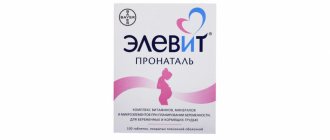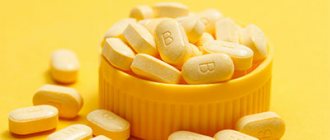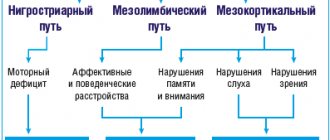Phenylpiracetam (or phenylpiracetam), known under the trade name Phenotropil, is a Russian drug belonging to the group of nootropics. It has a psychostimulating effect, affects memory, ability to concentrate, performance, and also reduces irritability and emotional excitability.
Until recently, many used it as a miracle pill for the brain. For example, when a lot of things have piled up in a short period of time. Or when the deadline is close and there is still too much work to do. Phenotropil also has many fans among students, especially during the session.
But now it is impossible to find Phenotropil in pharmacies - the manufacturer, Valenta Pharm, has stopped its production due to the termination of the agreement with the owners of the patent for the active substance. If you can find remnants somewhere else, it’s only from the last series, back in 2017.
In this regard, many people have a question - what to replace Phenotropil with? It would be logical to turn to drugs of the same pharmacological group - nootropics and psychostimulants.
Pubmed
All information in the article is based on scientific medical materials.
PMID (from the English PubMed Identifier, PubMed ID) is a unique identification number assigned to each publication, description, abstract, or full text of which is stored in the PubMed database.
PubMed is an English-language text database of medical and biological publications created by the US National Center for Biotechnology Information (NCBI) based on the biotechnology section of the US National Library of Medicine (NLM). A key component of PubMed is MEDLINE. It was first introduced in January 1996. Available through NCBI-Entrez[en], a central search engine including PubMed, PubChem and other major medical databases. Contains approximately 25 million citations.
Action
What is especially good about Phenotropil is that it acts close to the natural process. With its help, the brain and the entire body are able to maintain their own resources without depleting them. The positive effects of taking the medicine are varied and are especially obvious for the brain:
- Metabolic processes, cerebral circulation, and regional blood flow in some areas of the brain, disturbed during ischemia, improve.
- Oxidation and reduction reactions are stimulated.
- Phenotropil enhances energy capabilities due to the utilization of glucose.
- The drug increases the amount of dopamine, serotonin and norepinephrine contained in the brain, without having a significant effect on its inherent bioelectrical activity.
- The resistance of brain tissue to toxic effects and hypoxia increases.
- The speed and quality of learning increases, the drug is ideal for improving memory and concentration.
- With the help of Phenotropil, it is possible to regulate the functioning of the central nervous system, increase physical endurance and the threshold of pain sensitivity.
By taking this remedy, it is possible to increase performance, increase intellectual activity, increase resistance to negative factors - stress, shock, intoxication, injuries, and improve the quality of life. When using the product simultaneously with stimulation of brain activity, vision and blood supply to the legs improve.
Using Phenotropil as a course, you can reduce increased appetite and have an anticonvulsant effect, while completely eliminating dependence on the drug, tolerance and withdrawal syndrome.
Another positive aspect inherent in taking Phenotropil is that the medicine begins to act after a very short period of time. Taking one tablet is enough to feel positive changes and a surge of vigor. According to user reviews, brain activity increases after just 30 minutes.
Termination of production of phenotropil
Many of you are faced with the impossibility of purchasing such an effective nootropic as Phenotropil in pharmacies. This is due to the cessation of its production by Valenta-Pharm due to patent disputes with the inventor, Valentina Akhapkina. Her plans were to expand the field of application of the drug and introduce new dosage forms (including injections), but the manufacturing company refused this. Phenotropil produced by Akhapkina’s own company (Vira Innfarm) is not yet available for purchase. The Baltic generic is also currently unavailable.
Where did it go and what to replace it with?
Two years ago, phenotropil disappeared from pharmacies. For some time it was still possible to purchase the remains of the drug from the warehouse. It turned out that the medicine was discontinued and is no longer produced.
This nootropic was very popular, so for many consumers the question arose: is it possible to replace it and what analogues of phenotropil exist?
If we talk about the patented active ingredient phenotropil, then, unfortunately, it has no analogues.
As an alternative, you can use other nootropic drugs that have an activating effect on memory, learning, intoxication and resistance to brain hypoxia. Here are some of them:
- Vinpocetine;
- Piracetam;
- Glycine;
- Nootropil;
- Phenibut;
- Phenylpiracetam.
The active substance vinpocetine stimulates blood circulation. Promotes concentration, improves memory, especially during stress and fatigue. Therefore, it is prescribed for vascular atherosclerosis, encephalopathy, dementia, and traumatic brain injuries. Based on vinpocetine, you can take Bravinton, which also protects brain cells during hypoxia.
Among the effective analogues, Escotropil, which is based on piracetam, should be noted. It is used to treat Alzheimer's disease and for cerebral circulatory disorders, speech and other psychoorganic disorders in older people.
To choose the right analogue, consult a specialist.
Effects of phenotropil
Why does phenotropil, aka phenylpiracetam, attract us all? Of course, it has a psychostimulating effect and improves memory! Some explained this by a certain affinity for dopamine receptors, some - to ionotropic glutamate receptors (for example, to NMDA or AMPA), but everything is much more interesting - this racetam was associated with nicotinic cholinergic receptors, which is responsible for its 2 main effects:
1) Psychostimulation - activation of nicotinic cholinergic receptors located on the surface of the dopaminergic neuron leads to the release of vesicles with dopamine. A similar process occurs outside the brain - the release of norepinephrine and adrenaline is triggered in the adrenal glands. Due to the fact that nicotinic cholinergic receptors are a “constructor” consisting of different subunits, which can be combined in different ways depending on the activity of certain genes in different populations of neurons. Phenylpiracetam had a greater affinity for H-cholinergic receptors in the brain, causing far fewer cardiovascular side effects.
2) Improving memory - in this case the mechanism is more complicated - prolonged activation of H-cholinergic receptors on the surface of glutamatergic neurons triggers an increase in the density of NMDA receptors (glutamate-dependent calcium channels), accordingly increasing the sensitivity of neurons to this excitatory neurotransmitter and “strengthening” this type of signal connections between nerve cells. This mechanism was described in the article “Phenotropil as a receptor modulator of synaptic neurotransmission” by the creator of the drug, V.I. Akhapkina, and is considered the main one.
Dosage
The dosage regimen is set individually.
Phenotropil is taken orally immediately after meals.
The average single dose is 100-200 mg, the average daily dose is 200-300 mg. The maximum daily dose is 750 mg. It is recommended to divide the daily dose into 2 doses. A daily dose of up to 100 mg should be taken 1 time/day in the morning; a daily dose of more than 100 mg should be divided into 2 doses. The duration of treatment can vary from 2 weeks to 3 months. The average duration of treatment is 30 days. If necessary, the course can be repeated after a month.
To improve performance, prescribe 100-200 mg 1 time/day in the morning for 2 weeks (for athletes - 3 days).
For nutritional-constitutional obesity - 100-200 mg 1 time/day in the morning for 30-60 days.
It is not recommended to take Phenotropil after 15 hours.
Analogs
How can you recreate these effects of phenylpiracetam? There are several approaches - one of them is taking drugs with a similar pharmacodynamic profile, i.e. common targets for binding. For example, choline alphoscerate (alpha-GPC) - in addition to being a precursor in the biosynthesis of acetylcholine, it itself can bind to nicotinic cholinergic receptors. Many of those who took it reported psychostimulant properties. A bonus is an increased feeling of satiety when smoking - sometimes this substance is used in schemes to quit cigarettes and reduce pack-days. In addition, unlike phenylpiracetam, which, being a domestic drug, unfortunately, has poorly realized potential, dosage regimens and possible prescriptions for a-GPC have been quite well researched and described by international teams of doctors. This substance also has a very interesting feature, discovered, oddly enough, by sports doctors (PMID: 29042830) - it increases muscle strength, as shown in jumping tests. In addition, a-GPC has been found to have another property that many amateurs (and professionals) will appreciate in controlling their body - it is currently considered as a powerful geroprotector (PMID: 29191088)! Mainly, the substance slows down the accumulation of amyloidogenic proteins in the brain and reduces chronic inflammatory processes in the nervous system.
Alpha GPC
1999 rub.
Another approach to replacing phenylpiracetam is to recreate its effects, but through the activation of other mechanisms regulating the functioning of our brain. Many people like the stable “working” mood that is felt in the middle of the Phenotropil course. For this case, sulbutiamine, a dimer of thiamine (vitamin B1), will be effective. Unlike regular thiamine, the dimer is a more lipophilic molecule that penetrates the tissues of the nervous system more easily and has the ability to cumulate (i.e., store). First of all, let's look at its mechanism of action: it only partially breaks down into thiamine (whose beneficial effects are undeniable, not insufficient per se for a strong mood lift), the dimerized molecule itself is capable of saving neurons by preventing apoptosis - it is known that not only a decrease in low molecular weight neurotransmitters, but also important neurotropic factors (NGF, BDNF), which entails not only a decrease in mood, but also in cognitive abilities and memory. Experiments have shown that with a low level of neurotropic factors, the nerve cell is not only incapable of restructuring contacts (synaptic plasticity), but can go into apoptosis. Sulbutiamine blocks this effect, preventing neurons from reducing their activity when the level of neurotrophins is reduced - “Sulbutiamine counteracts trophic factor deprivation induced apoptotic cell death in transformed retinal ganglion cells.” In addition, earlier studies have shown improvements in long-term memory when taking sulbutiamine, but again, this effect is still tied to the cholinergic signaling system. The experiment showed an increase in the activity of the corresponding structures of the hippocampus by 10% - “Chronic administration of sulbutiamine improves long term memory formation in mice: possible cholinergic mediation.”
A separate bonus for athletes will be an article by Rodchenkov (yes, the same analytical chemist who was involved in sample analysis before the anti-doping scandal) in Drug Testing and Analysis, which provides statistics on the use of sulbutiamine by athletes. Unfortunately, as of 2009 (statistics publication), this substance was little known in Russia, and its stimulating ergogenic (increasing physical performance) properties were just beginning to find recognition. Ray Energy
449 rub.
There is also a third approach, if you are faithful to the drugs of the racetam class - taking pramiracetam and aniracetam together. These drugs improve memory, but in slightly different ways - by increasing the activity of neuronal NO synthetase, and, in the case of pramiracetam, they slightly “repeat” the effect of phenotropil, being allosteric modulators of AMPA receptors. These receptors are also ionotropic glutamate receptors, but in this case it is not so much their density that increases as the sensitivity of the receptor complex itself. In total, these effects reproduce (and in some ways even exceed) the ability of phenotropil to improve memory.
Contraindications
- hypersensitivity to the components of the drug.
The drug should be prescribed with caution to patients with severe organic damage to the liver and kidneys, severe arterial hypertension, and severe atherosclerosis; patients who have previously suffered panic attacks, acute psychotic states, accompanied by psychomotor agitation (as there may be an exacerbation of anxiety, panic, hallucinations and delusions); patients prone to allergic reactions to nootropic drugs of the pyrrolidone group.
What is inside
So, we’ll leave the name to the conscience of marketers; I can only recommend adding “Nanotropil Novo Forte Limited Edition”. In general, it doesn’t matter what name the candy has, as long as it’s tasty.
There are quite a lot of studies on phenylpiracetam or phenylpiracetam, the active ingredient of Nanotropil, within the country.
This substance may aid in recovery from organic brain damage, as the study writes: “Patients demonstrated increased mobility and daily activities, as well as less discomfort, anxiety, and depression (1).”
Phenylpiracetam reduces asthenia, when a person seems to have no strength, this is in a sample of more than 1000 people, which is not bad (2). Accelerates recovery after stroke, and again it is written that daily activity increases (3).
2 interesting experiments on animals: in both cases, the administration of phenotropil increased the circulating levels of interleukins (these are elements of the immune system), that is, indirectly this substance can support immunity (4, 5). They also write here about strengthening exploratory behavior.
Overall, a quick glance suggests that this is a mild stimulating nootropic, although for some, an extra pill in a day could completely disrupt sleep. Such people would be happy to believe in evidence-based medicine that nootropics do not work, but only sleeping pills help them sleep, and even then not always.
In sports
Due to its properties, Phenotropil is widely used in sports in combination with sports nutrition, although officially it is considered doping, and if the drug is detected in the blood of the violator, disqualification will occur. For athletes, its effect becomes noticeable already on the second or third day of use:
- physical activity increases;
- endurance increases;
- strength indicators increase.
Such properties are especially valuable for running and before training, although if we are talking about gaining muscle mass, Phenotropil will have to be abandoned - the drug is used for obesity, so taking it reduces appetite. The drug should not be taken immediately before the race, given the period of elimination of the substance from the body. It is recommended to take tablets 3-7 days before competitions at a daily rate of 200-500 mg.
Imported
Today, there are a large number of imported drugs that act as analogues of phenotropil. Among them are:
- "Piracetam";
- "Acefen";
- "Cogitum";
- "Vinpotropil";
- "Bravinton".
The above analogues have the same properties as the domestic drug called Phenotropil. The only disadvantage of medicines produced by a foreign manufacturer is the high cost of the drug.
For weight loss
When no methods help to lose weight, including exercise and a balanced diet, women decide to opt for medical weight loss. The drugs include Phenotropil.
Since it has long been discontinued, many are starting to look for substitutes for weight loss. Among them it is worth highlighting such analogues as:
- "Pantogam";
- "Cerebrolysin";
- "Encephabol";
- "Neurodar".
All of the above analogues of phenotropil have properties that accelerate metabolic processes. Experts have found that these drugs eliminate all the symptoms that accompany the feeling of hunger, including:
- increased fatigue and irritability;
- loss of energy;
- significant decrease in performance.






